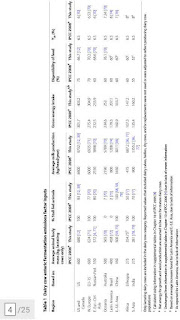🐃🐂🐄Cattle farming: How it affects the Amazon forests, referred to as "lungs of the earth", producing up to 20% of oxygen demand, and the global climate with the emission of greenhouse gases 🌎🌍🌏
https://amp.cnn.com/cnn/2019/08/22/americas/amazon-fires-humans-intl-hnk-trnd/index.html
The vast majority of these fires are human-lit," said Christian Poirier, the program director of NPO Amazon Watch. He added that even during dry seasons, the Amazon -- a humid rainforest -- doesn't catch on fire easily, unlike the dry bushland in California or Australia.
And 99% percent of the fires result from human actions "either on purpose or by accident," Alberto Setzer, a senior scientist at INPE, said. The burning can range from a small-scale agricultural practice, to new deforestation for a mechanized and modern agribusiness project.
This begs the question:Why do the Brazilian farmers set the Amazon on fire? Simple answer: To create herding ground for industrially raised cattle. Brazil is the largest exporter in beef, contributing to 20 percent of the global demand.
"Cattle ranching in the Amazon region is a low yield activity, where densities often average just one cattle per hectare. Most land in cattle operations in the Brazilian Amazon are medium and large size ranches, with averages of several hundreds of hectares."
An increase in the consumption of beef worldwide has thus a direct impact on the intensity of deforestation in the Amazon, that too on a very inefficient level of its application, the largest herding grounds reaching as many as thousands of hectares.
A possible rebuttal is advocating factory farming, which confines animals into small spaces. But even then, to produce the required food, one needs a lot of land for raising the crops. Even this won't fare better in the succeeding cost benefit analysis as we'll see.
Eating beef not only affects global climate with the effect of deforestation, but also with creating a higher carbon footprint on the atmosphere by the factory bred animals. More animals raised above the normal ecological levels means more co2 emissions.
So the effects are cumulative: with mode demand for beef, more possible deforestation and more greenhouse emissions, the food demand though eventually replaceable by a vegetarian diet.
https://amp.theguardian.com/environment/2014/jul/17/world-cropland-feed-3-billion-more-people-study?__twitter_impression=true
So how exactly does this "green house emissions from industrially raised cattle(esp beef) compare with conventional sources of green house emission such as cars, industries, etc.?
Comparison with other sources of greenhouse gases https
An interesting comparison with other sources of nutrition
(All pic credits @sciam )
On top of all this, regular red meat requires far more amount of resources than what is necessary for other forms of meat or vegetarian alternatives
Finally a research study on the emission of greenhouse gases such as CO2 and CH4 by livestock.
Revised methane emissions factors and spatially distributed annual carbon fluxes for global livestock Julie Wolf1, Ghassem R. Asrar2 and Tristram O. West

















No comments:
Post a Comment